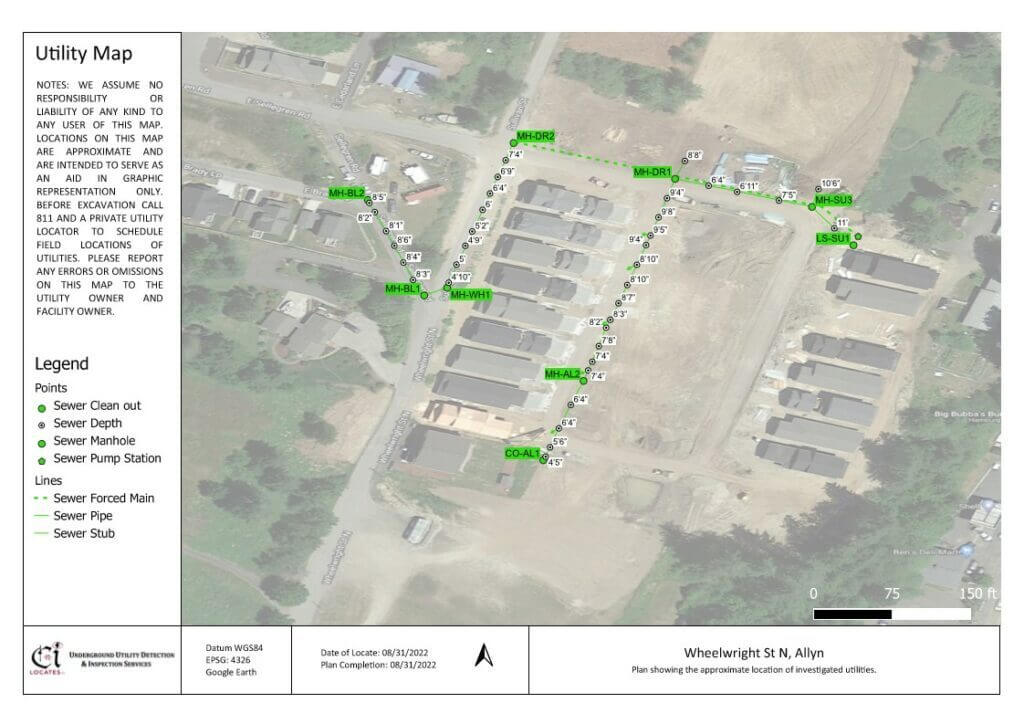Non-Metallic Pipe Detection

Non-Metallic Pipe Detection in Oregon (Eugene & Portland) and Washington State (Everett, Renton, Seattle, & Tacoma)
Identification of non-metallic utilities: Inserting a variety of locating devices e.g., Plumber’s Snake, Electrician’s Fish Tape, Flex Rods, Flexi Traces, Wire, and attached Sondes/Transmitters, then verifying their locations with electromagnetic receivers.
Check that the sonde and locator are operating at the same frequency and working correctly. A quick test for both sonde and locator is to position the sonde at a distance equal to its rated depth range from the locator. Point the locator at the sonde with its blade in-line with the sonde, and check that the bar graph on the locator displays more than 50% with the sensitivity of the locator set to maximum. Note: The blade of the locator must be in line with the sonde, the opposite to cable locating.
With the sonde attached to the flexible rod, insert it into the drain or duct to be located, keeping the sonde just in view. Hold the locator vertically and directly over the sonde, with the blade in-line with the sonde. Adjust the sensitivity of the locator to give a bar graph display reading between 60% and 80%.
A sonde radiates a peak field from the center of its axis with ghost signals at each side of the peak. Move the locator a little way to one side and then along the axis of the sonde forwards and backwards to detect the ghost signals. It is a good idea to locate the ghosts as finding them positively confirms the position of the main peak. To lose the ghosts subsequently, reduce the sensitivity of the locator a little to leave only the main peak detectable. With the locator sensitivity set as desired, propel the sonde along three to four paces and stop. Place the locator over the estimated position of the sonde and:
(a) Move the locator backwards and forwards with the blade in line with the sonde and stop when the locator display indicates a clear peak response.
(b) Rotate the locator as if the blade were a pivot, stop when the display indicates a clear peak response.
(c) Move the locator from side to side until the display indicates a clear peak response
Repeat (a), (b) and (c) in smaller increments with the locator blade resting on or near the ground. The locator should now be directly above the sonde with the blade in line with the sonde. Now mark the position. Propel the sonde a further three to four paces along the drain or duct and pinpoint and mark. Repeat this procedure along the route at similar intervals. It should only be necessary to change the locator sensitivity while tracing the sonde if there is a change in the depth of the drain or duct, or the distance between locator and sonde.
Note the following link for a technical overview and product application to flush a transmitter through a pipe. http://prototek.net/using-flushable-transmitters/


